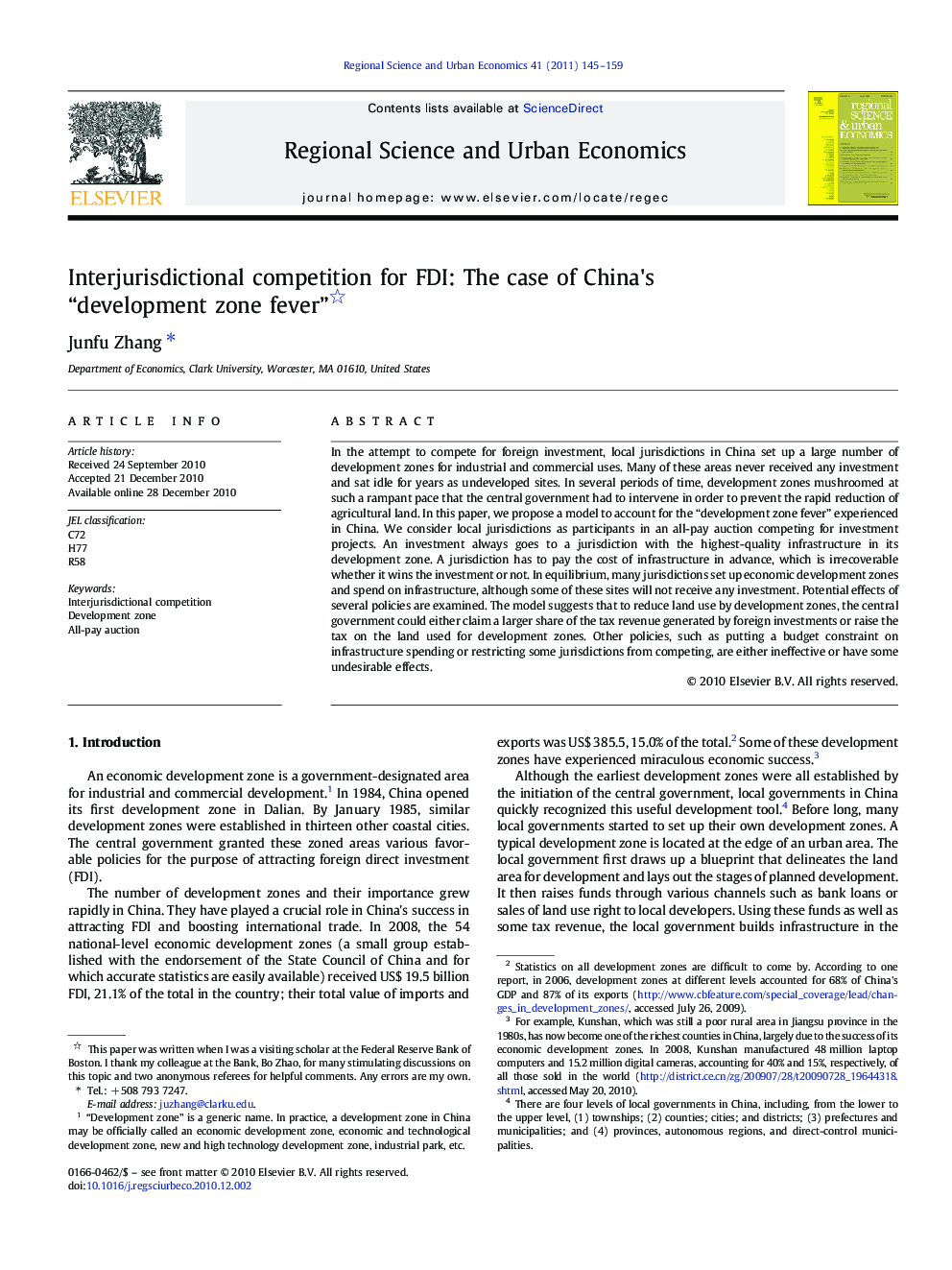| Article ID | Journal | Published Year | Pages | File Type |
|---|---|---|---|---|
| 983426 | Regional Science and Urban Economics | 2011 | 15 Pages |
In the attempt to compete for foreign investment, local jurisdictions in China set up a large number of development zones for industrial and commercial uses. Many of these areas never received any investment and sat idle for years as undeveloped sites. In several periods of time, development zones mushroomed at such a rampant pace that the central government had to intervene in order to prevent the rapid reduction of agricultural land. In this paper, we propose a model to account for the “development zone fever” experienced in China. We consider local jurisdictions as participants in an all-pay auction competing for investment projects. An investment always goes to a jurisdiction with the highest-quality infrastructure in its development zone. A jurisdiction has to pay the cost of infrastructure in advance, which is irrecoverable whether it wins the investment or not. In equilibrium, many jurisdictions set up economic development zones and spend on infrastructure, although some of these sites will not receive any investment. Potential effects of several policies are examined. The model suggests that to reduce land use by development zones, the central government could either claim a larger share of the tax revenue generated by foreign investments or raise the tax on the land used for development zones. Other policies, such as putting a budget constraint on infrastructure spending or restricting some jurisdictions from competing, are either ineffective or have some undesirable effects.
